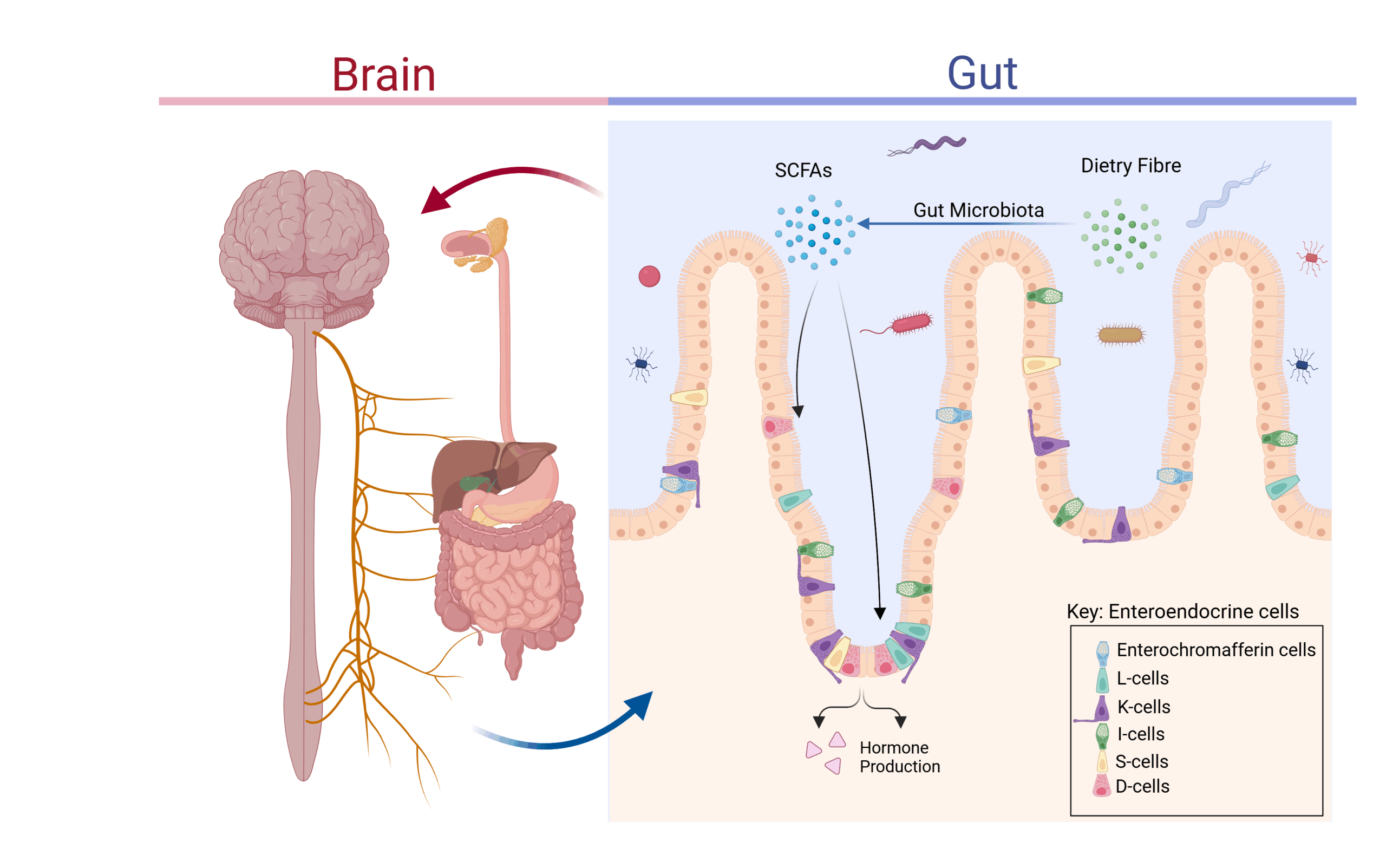When we think of hormones, we often picture the endocrine system, including the ovaries, adrenal glands, thyroid, and others. While these organs are critical for hormone production, they do not work alone. One of their biggest partners in maintaining hormone balance is the gut.
Beyond digesting food, the gut is an ecosystem of microbes that influence everything from how hormones are broken down to how they affect our mood and physiology. A disruption in the gut microbiome can interfere with hormone regulation, ultimately putting it out of sync. This blog will give you an overview of how big of a role the gut has to play in our hormone balance.
Enteroendocrine cells: The Gut’s Secret Weapon
Enteroendocrine cells (EECs) are specialised cells found within the gastrointestinal tract, and pancreas. Their role is to sense different stimuli and release hormones accordingly. These hormones may circulate through the blood to influence the whole body, or act nearby as local signalling agents within the digestive system.
Different subtypes of EECs release specific hormones, each with unique roles:
- Enterochromaffin cells (ECs): secrete serotonin, affecting gut motility, secretion, sensation, and brain function.
- L-cells: produce GLP-1 and PYY, regulating insulin secretion and satiety (feeling of fullness).
- K-cells: release GIP, which stimulates the pancreas to release insulin when glucose or fat is present in the gut.
- I-cells: produce CCK, stimulating pancreatic enzymes, gallbladder contraction, and satiety.
- S-cells: secrete secretin, which controls pancreatic bicarbonate secretion. This helps create the right pH for digestive enzymes to work.
- D-cells: release somatostatin, broadly inhibiting other secretions. It acts like a brake to keep digestive and hormonal activity under control.

The Gut and Reproductive Hormones: The Estrobolome
The gut microbiome also influences reproductive hormones, particularly oestrogen. The Estrobolome refers to beneficial bacteria in the gut that produce enzymes which help process oestrogen. Oestrogen, which is produced in the ovaries, adrenal glands, and fat tissue, is excreted from the body through the gut in an inactive form. The enzymes produced by the estrobolome can reactivate it, however, allowing oestrogen to be reabsorbed from the gut into the bloodstream.
Microbial Metabolites, Hormones and the Gut-Brain Connection
Gut microbes also play a role in hormone signalling. They produce short-chain fatty acids (SCFAs) such as acetate, propionate, and butyrate during fibre fermentation. SCFAs stimulate enteroendocrine cells to release hormones that regulate appetite and metabolism.
In addition, SCFAs interact with the vagus nerve—a key communication pathway between the gut and brain—sending satiety signals that help regulate eating behaviour.
Neurotransmitter Production in the Gut
Various neurotransmitters are also synthesised or modulated in the gut by intestinal cells (especially enteroendocrine cells and enteric neurons) and by specific gut bacteria. Important neurotransmitters such as serotonin, GABA, dopamine, acetylcholine, glutamate, norepinephrine, and histamine are produced or influenced in the gut. Certain gut bacteria, including Lactobacillus, Bifidobacterium, and Staphylococcus, can produce neurotransmitters or their precursors, like GABA and dopamine. These gut-derived neurotransmitters communicate with the brain via the vagus nerve, immune signalling, or by providing precursors for central neurotransmitter synthesis, highlighting the gut-brain axis.
Key Takeaway
The gut is far more than a digestive organ—it is an endocrine powerhouse. Through the combined activity of enteroendocrine cells and gut microbes, it produces and regulates a wide range of hormones and neurotransmitters that influence digestion, appetite, metabolism, reproduction, and even brain function. Supporting gut health through diet, lifestyle, and microbiome care is therefore a crucial step toward maintaining overall hormonal balance.
